This house designed by delaVegaCanolasso / Ignacio de la Vega + Pilar Cano-Lasso in Madrid works as a space from where you can enjoy the landscape, a shelter that is a large porch where you can be protected, covered in the middle of nature.
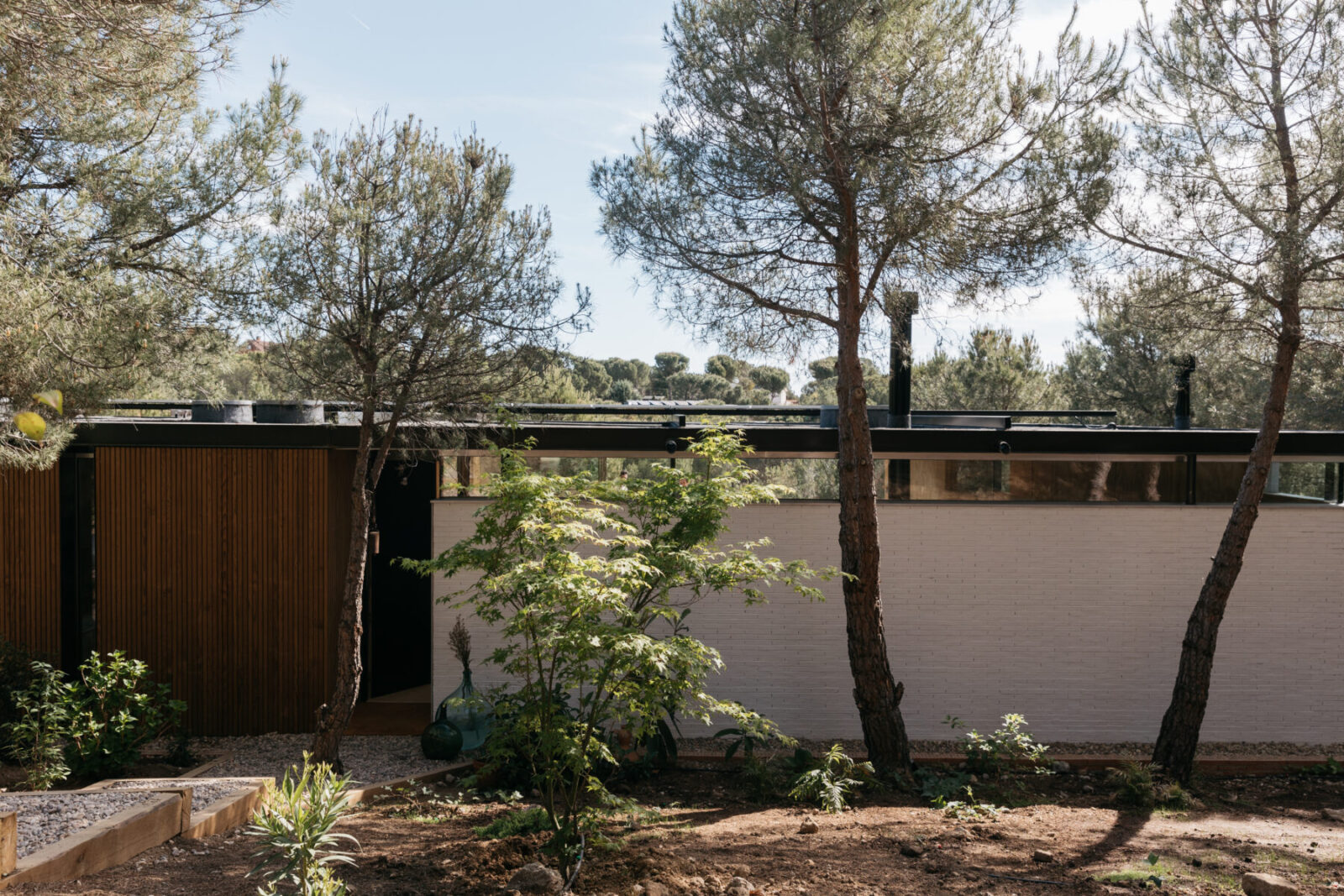
A fairly sloping terrain, full of pines and holm oaks and covered by a green mantle typical of spring, was what we found the first time we visited the place. An environment to respect and enhance. With its own identity and character.
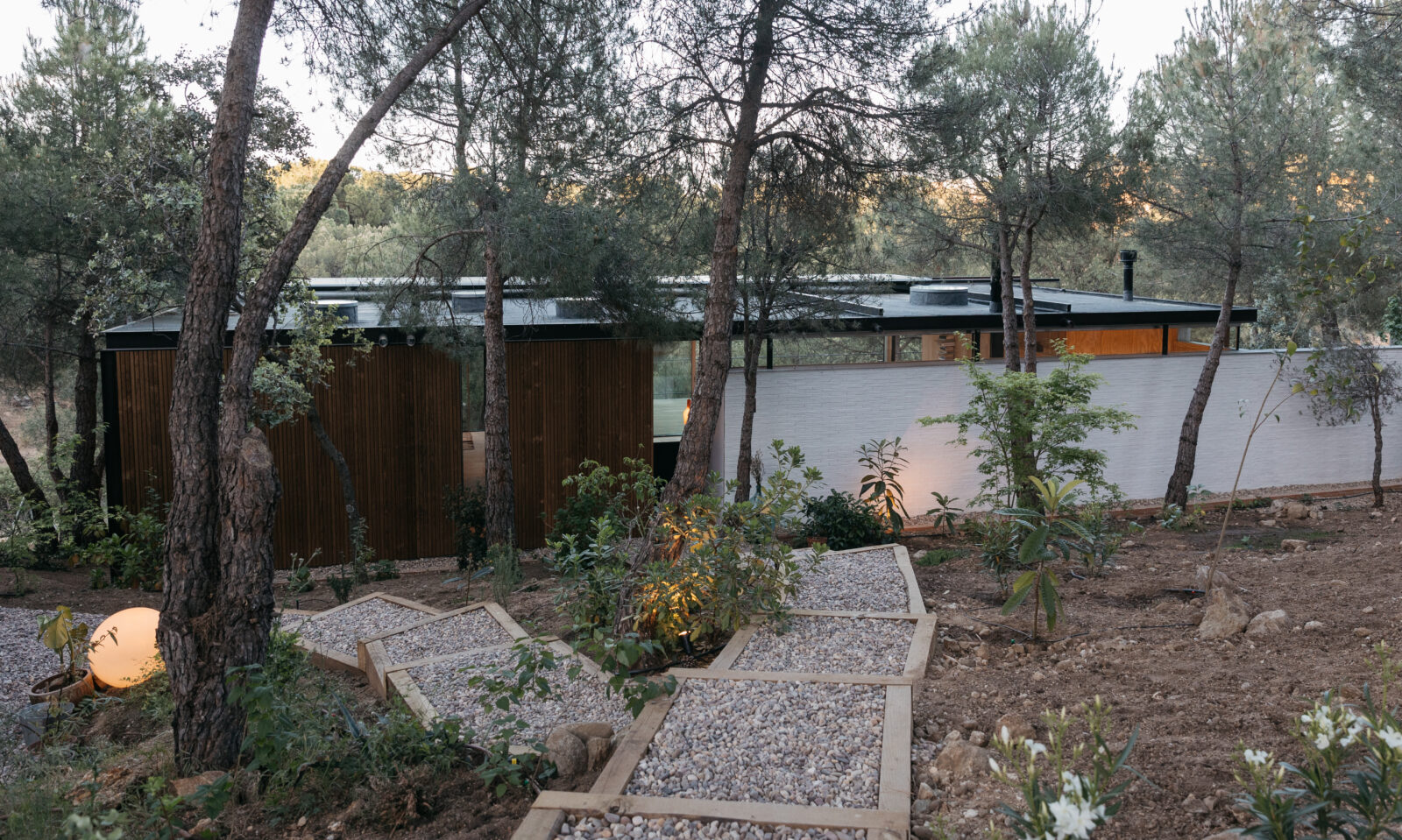
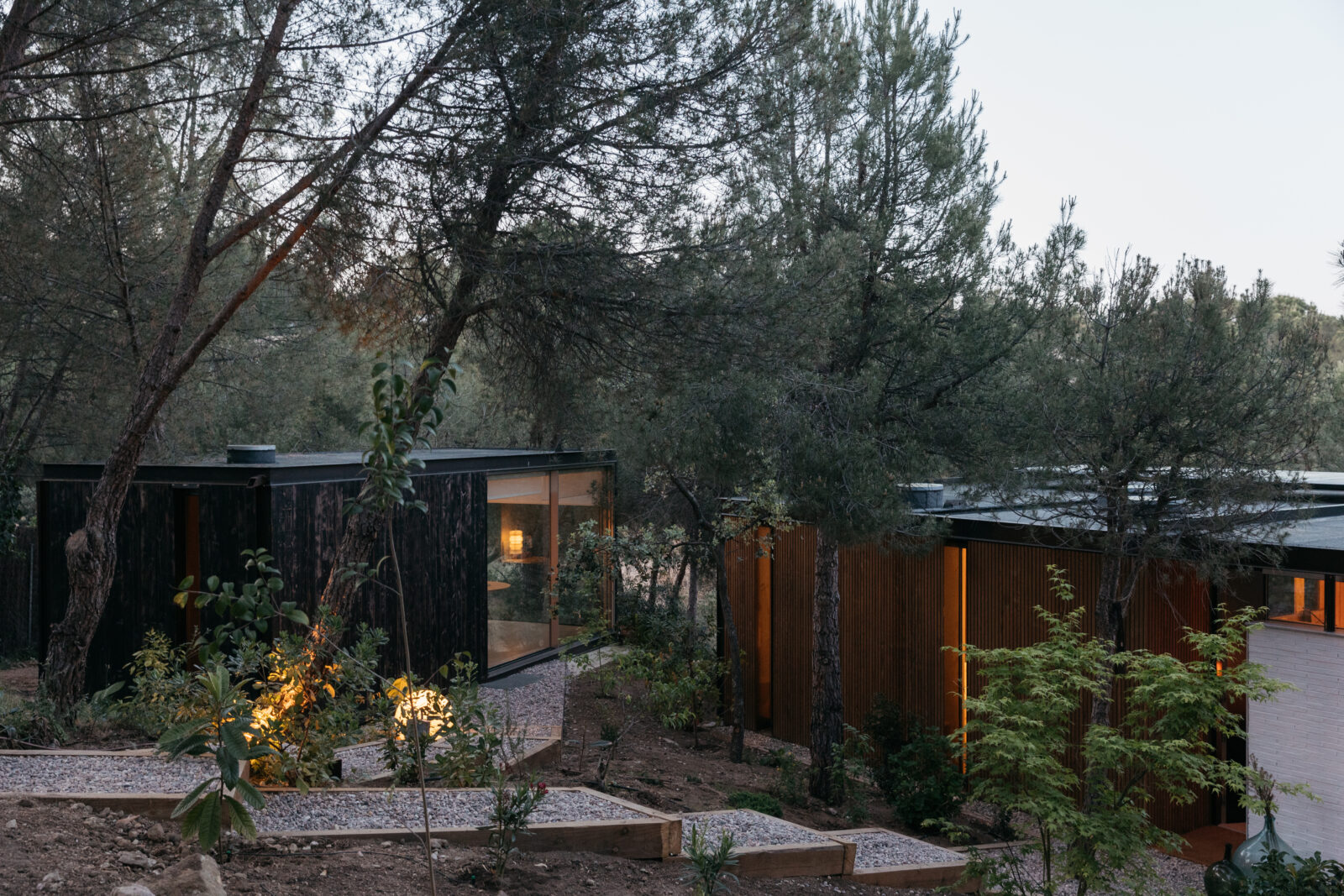
It’s nice when the site suggests from the beginning the spot that the house has to occupy. The clearing of light between the pines even drew its dimension, marking its limits that did not grow, with the desire to keep all the trees and alter the terrain as little as possible. For this reason, the structure starts from the lands natural level, leaning on a wall from which a cable-stayed cantilever is born. From there you can enjoy the views of the pine forest that we already sensed were privileged, during the pleasant picnics we had on what is now the terrace. A hole is cut in it to let the trunk of a pine pass through. The house was projected naturally, simple and pleasant; closed to the street and open to the landscape, incorporating the environment.
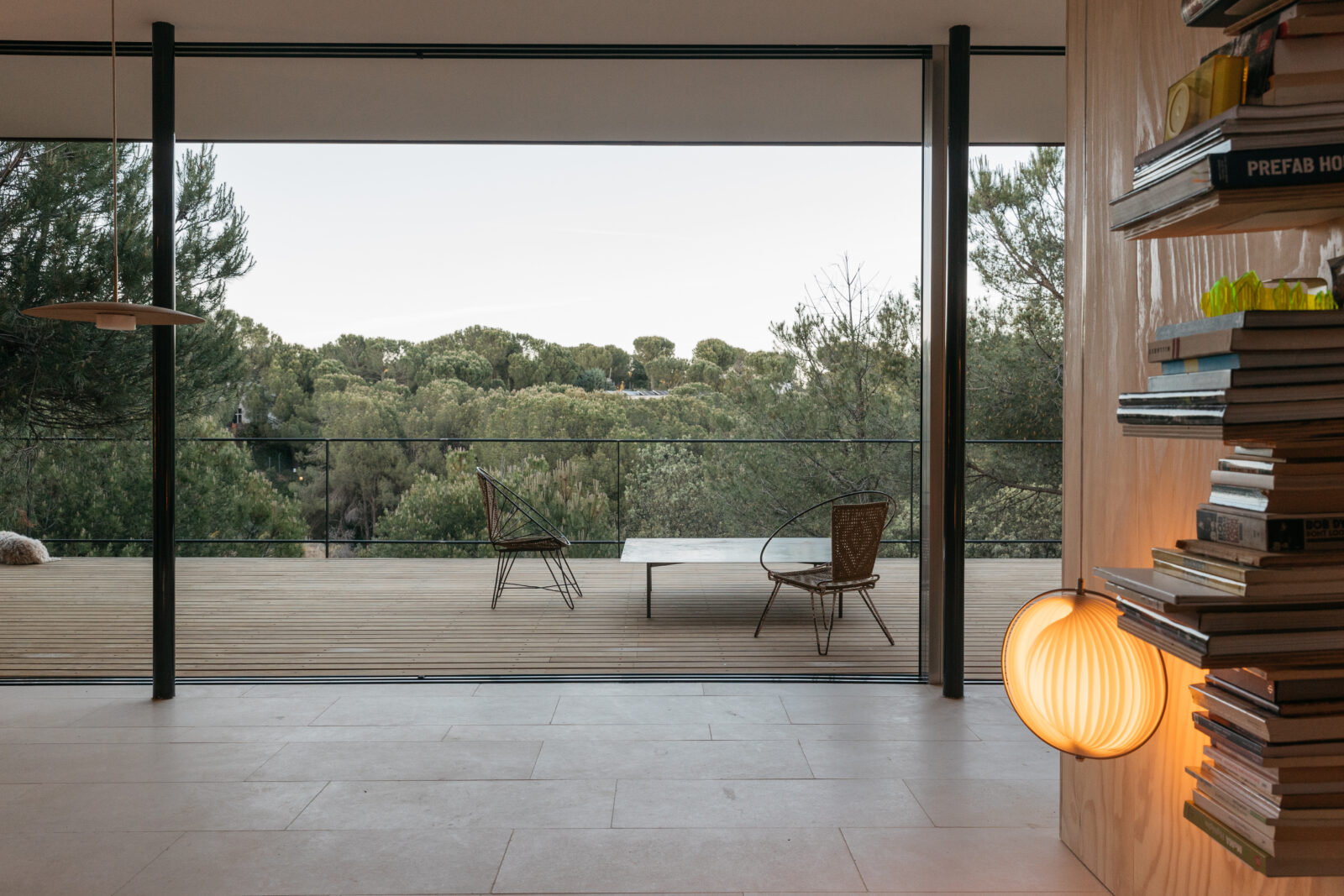
A shelter that works as a large porch where you can be protected, covered in the middle of nature.
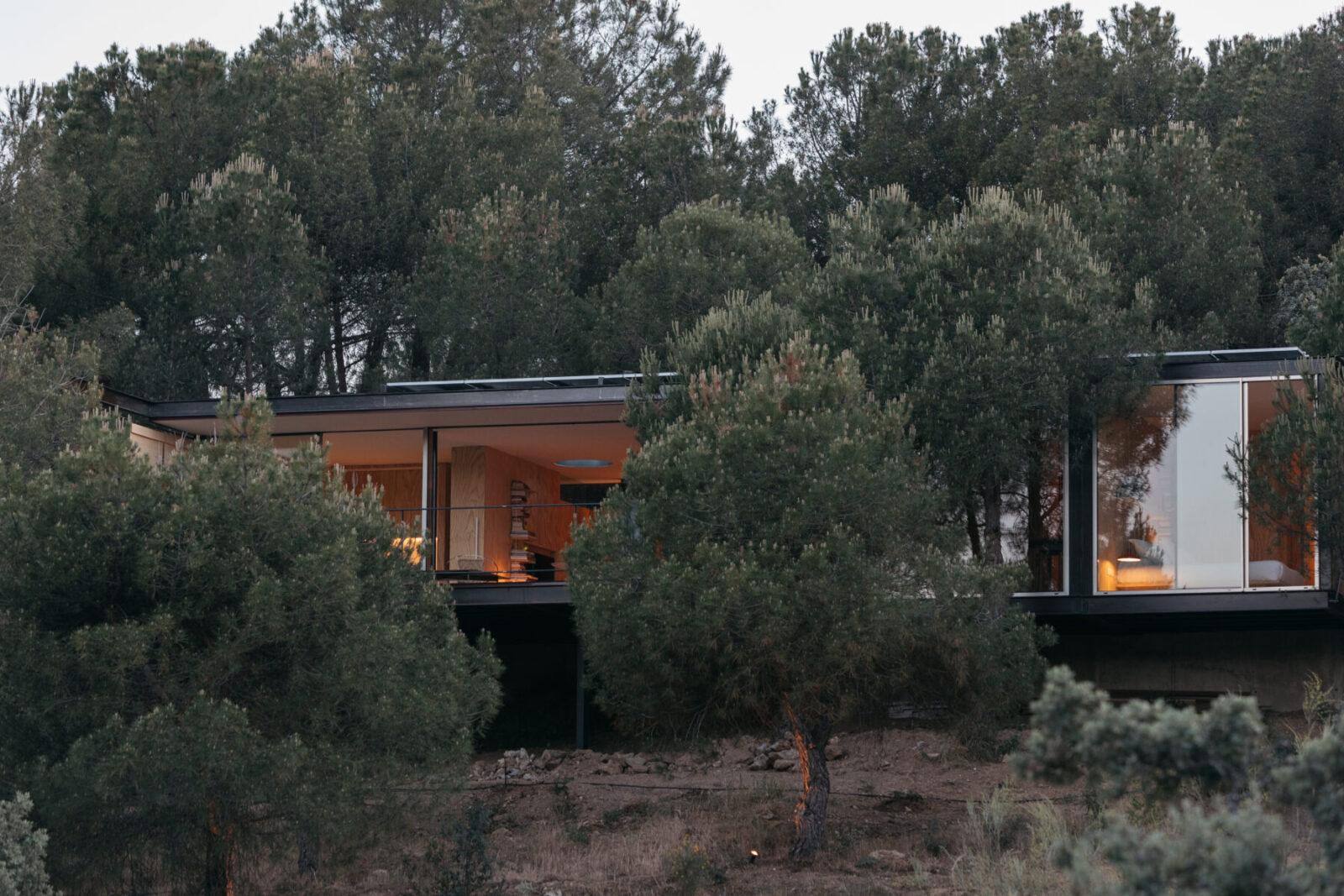
We thought that the way to touch the ground as little as possible was through an industrialized system. But at the same time we wanted to incorporate the grace and nuances of the traditional work. It seemed to us that a mixed system made a lot of sense, so we combined tini® modules totally manufactured in the workshop with whitewashed manual brick walls, the cantilever that does not touch the ground with the mud that comes out of it and wants to be covered with vines and jasmine.

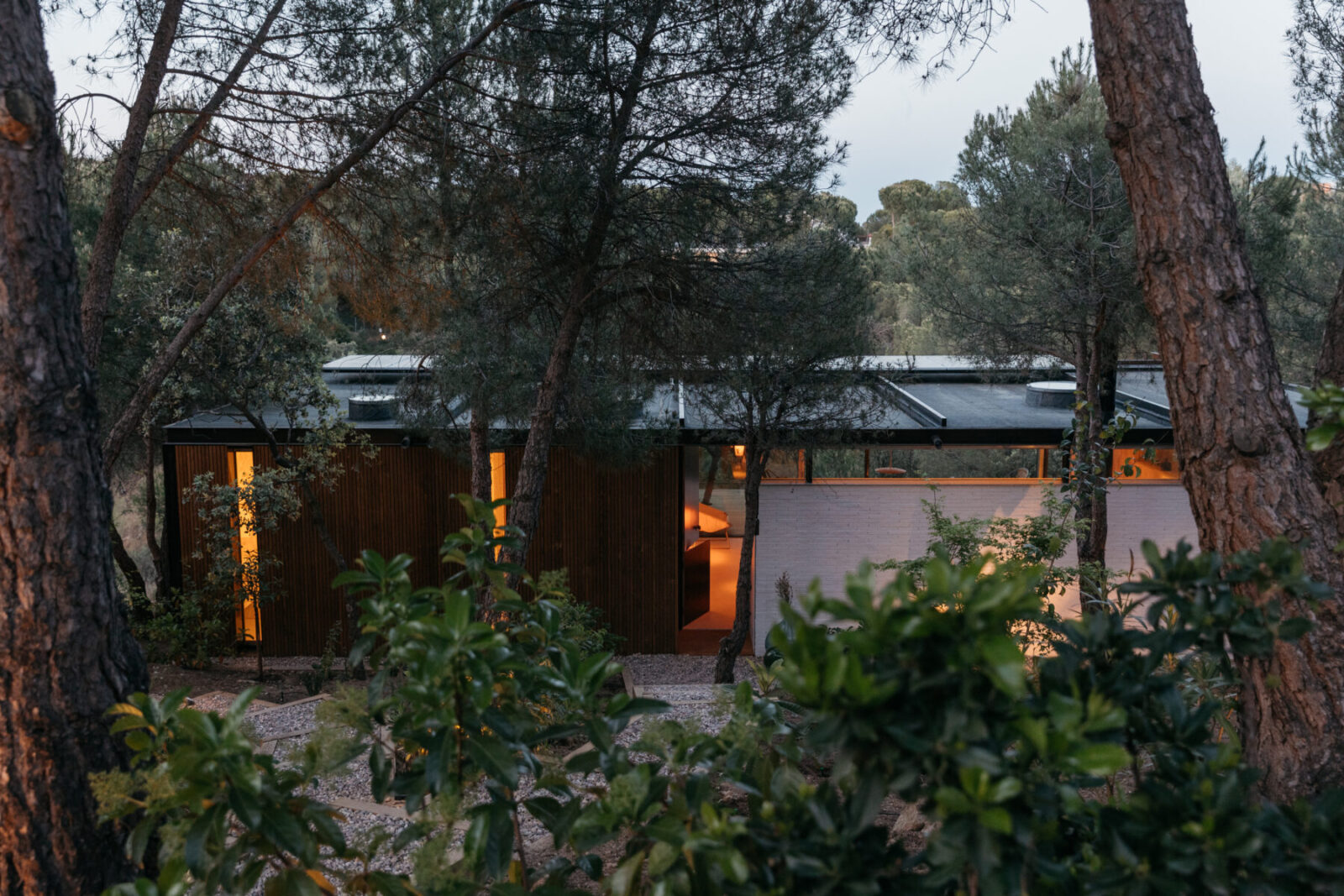
Contrast of the current and the timeless that gives a rich architecture and that improves over time.
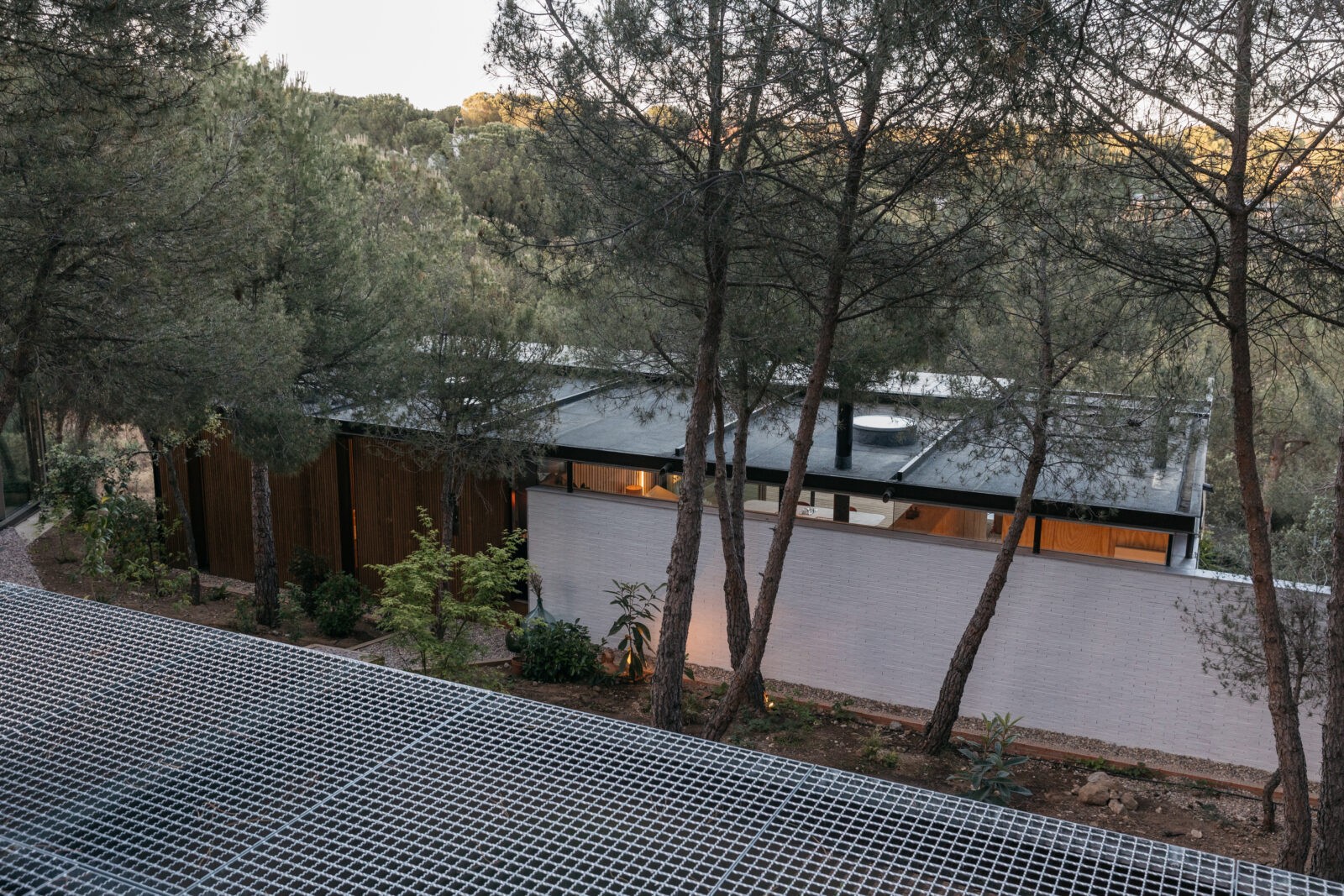
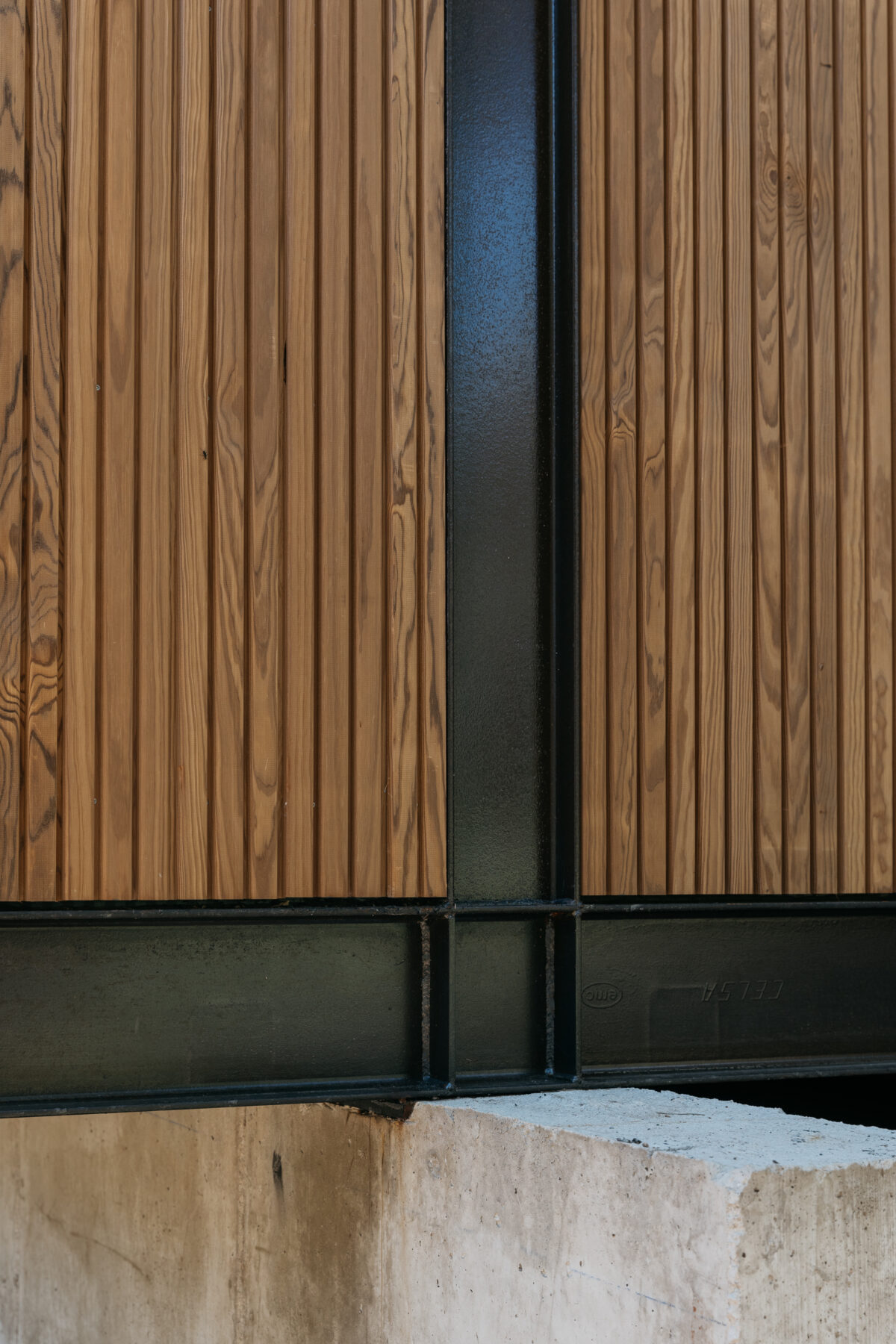
When you use an industrialized system, modulation is important, and this house is modulated. Each room with its bathroom is a tini®, and the study is another completely independent one. It is essential to separate the space where one works, which also gives us the opportunity to walk through the garden in the morning, when it is still fresh and the green of the leaves is intense.
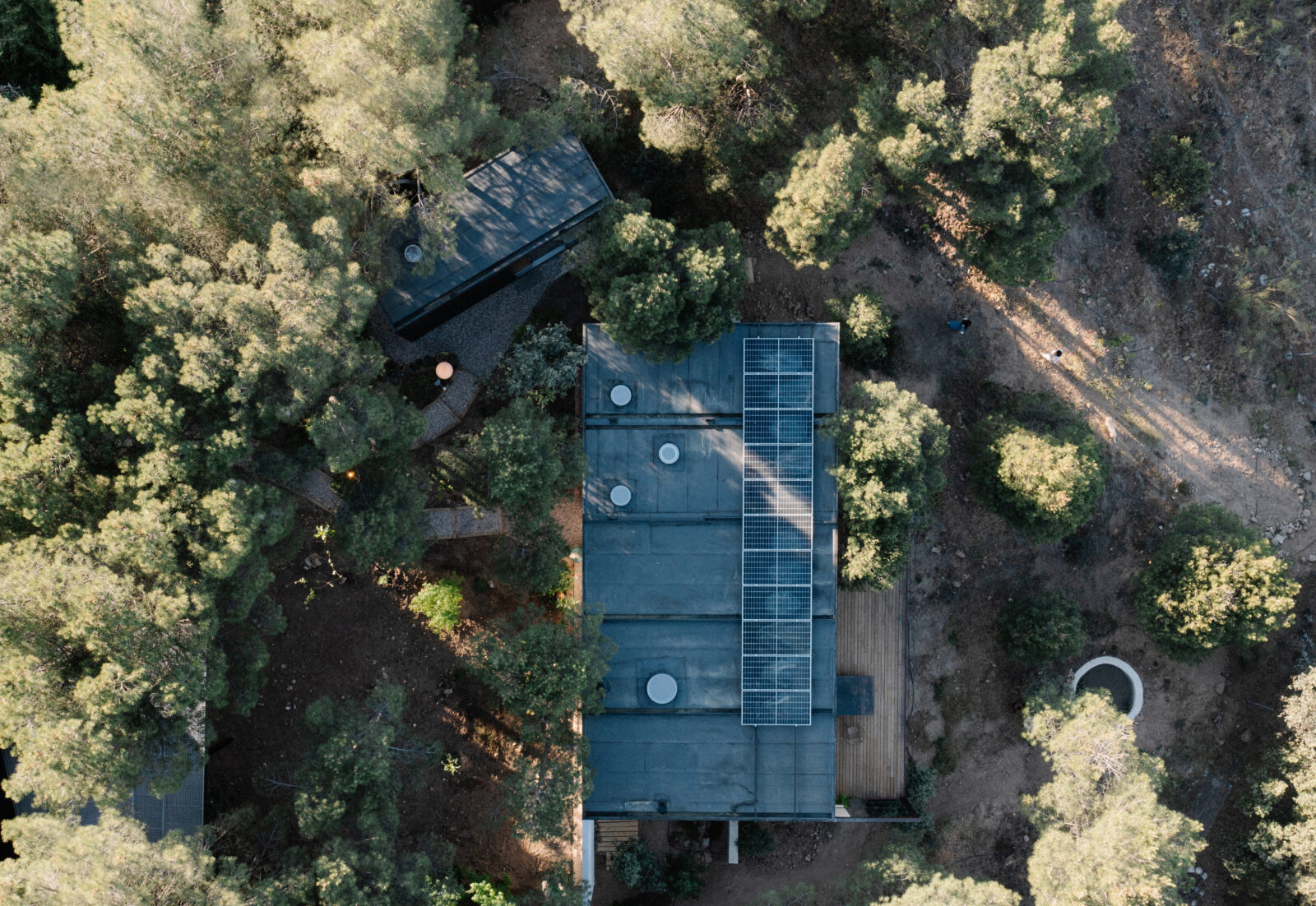
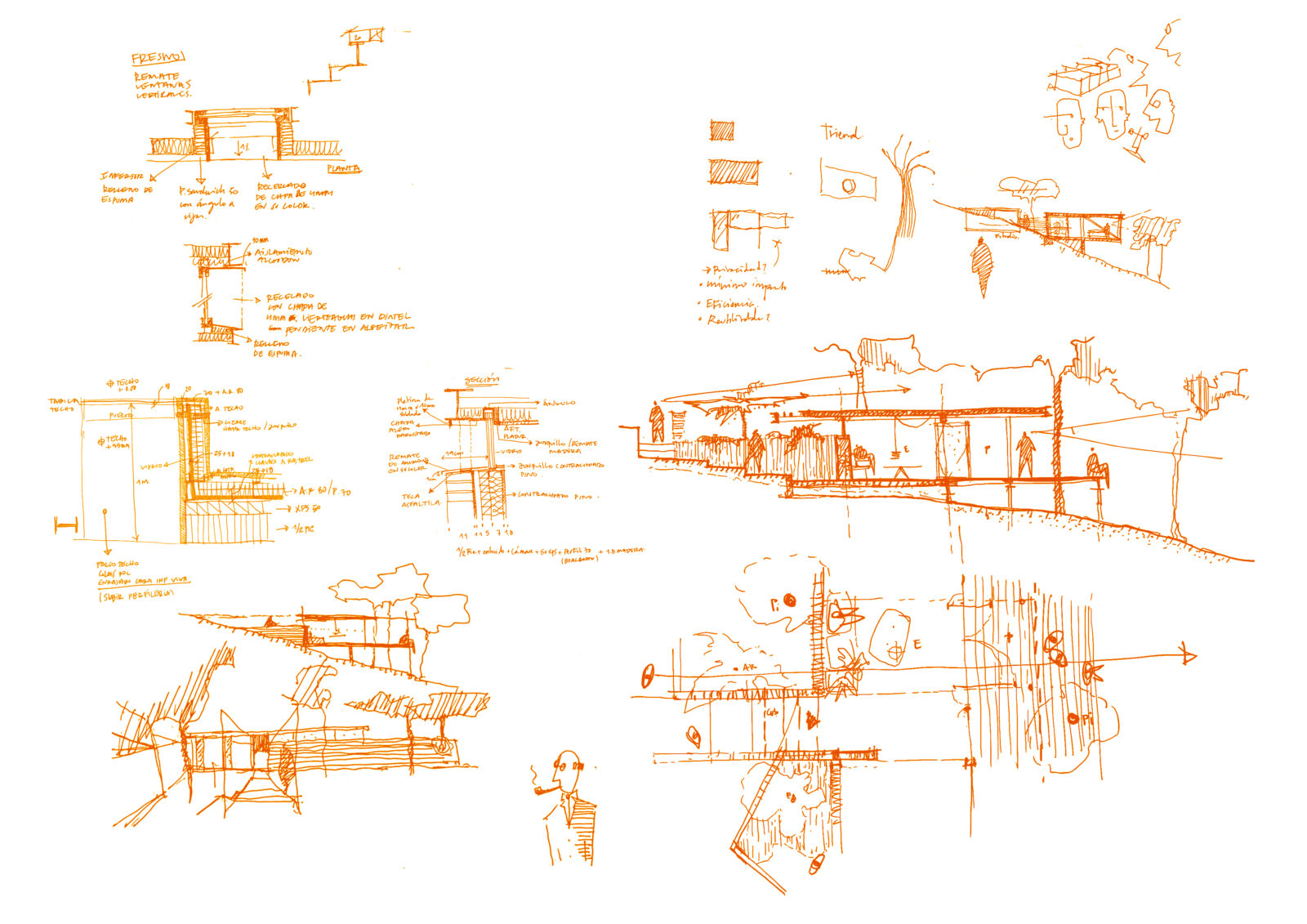
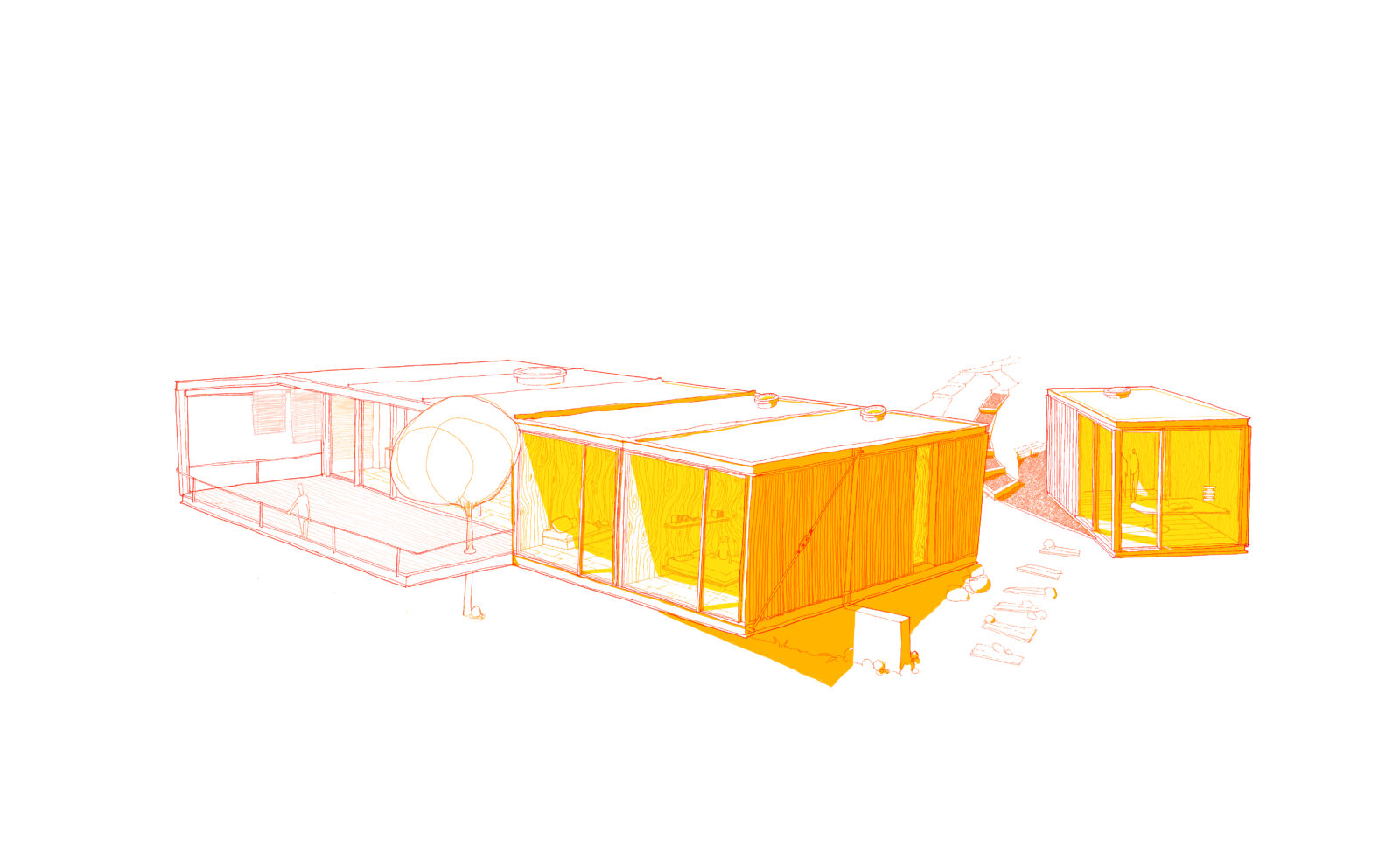
Three more structural bays, which follow this modulation, make up the living room, dining room and kitchen. They were executed in situ, and their cover floats over the brick wall thanks to a ripped window, which runs the entire length of these space. Following this same concept of simplicity, the garage is a very light tramex structure that starts from the street and is supported by 3 metal pillars.
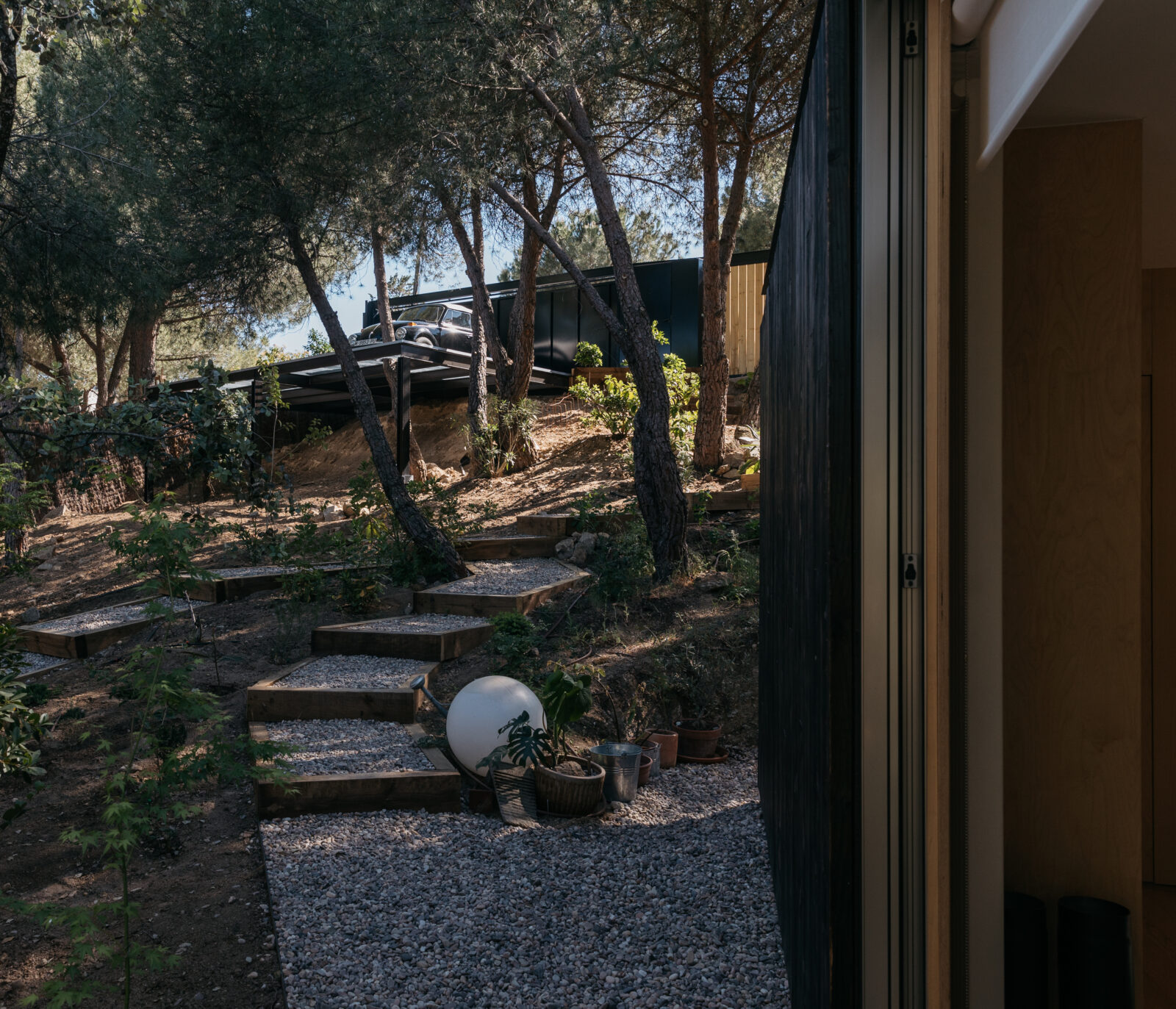
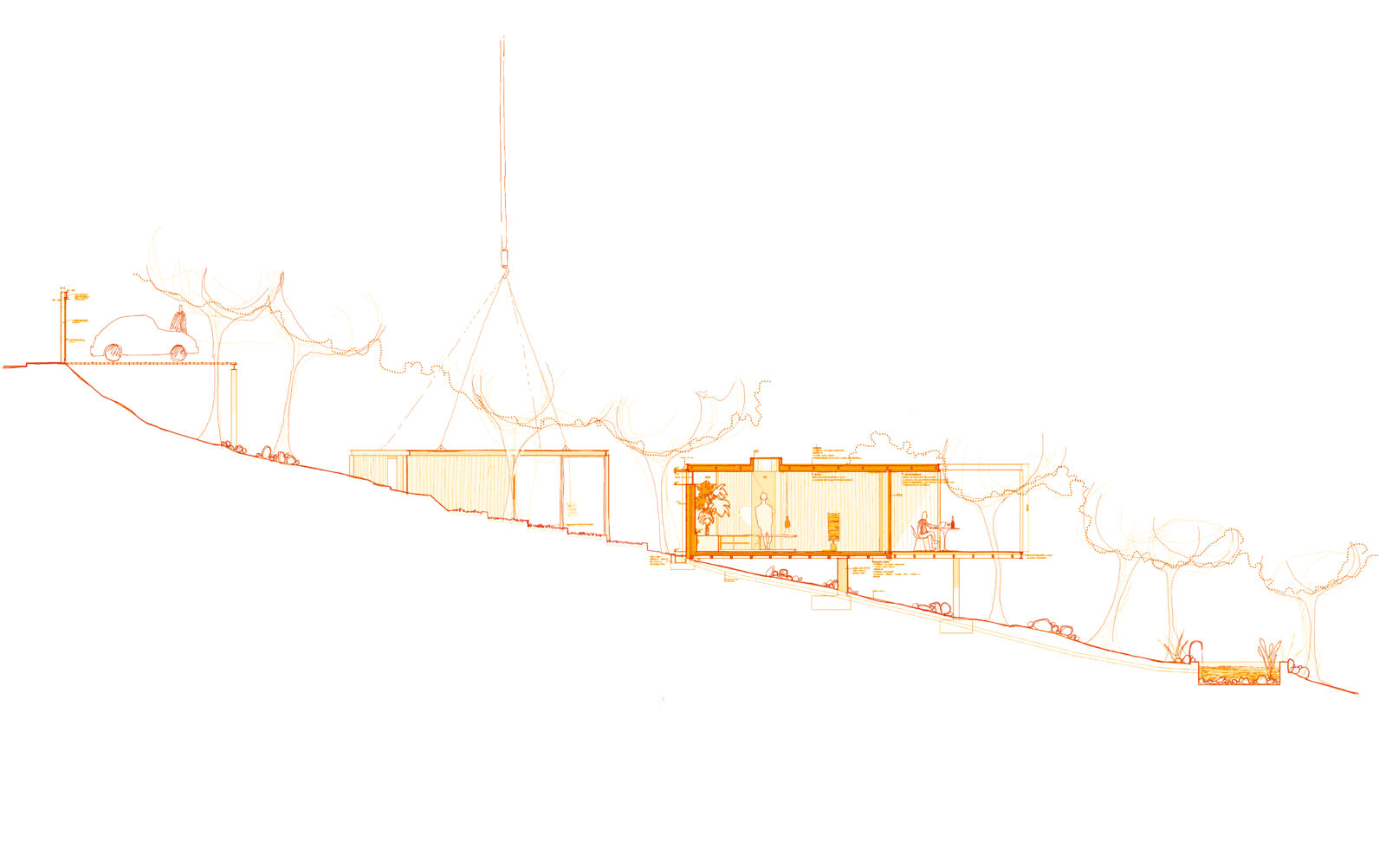
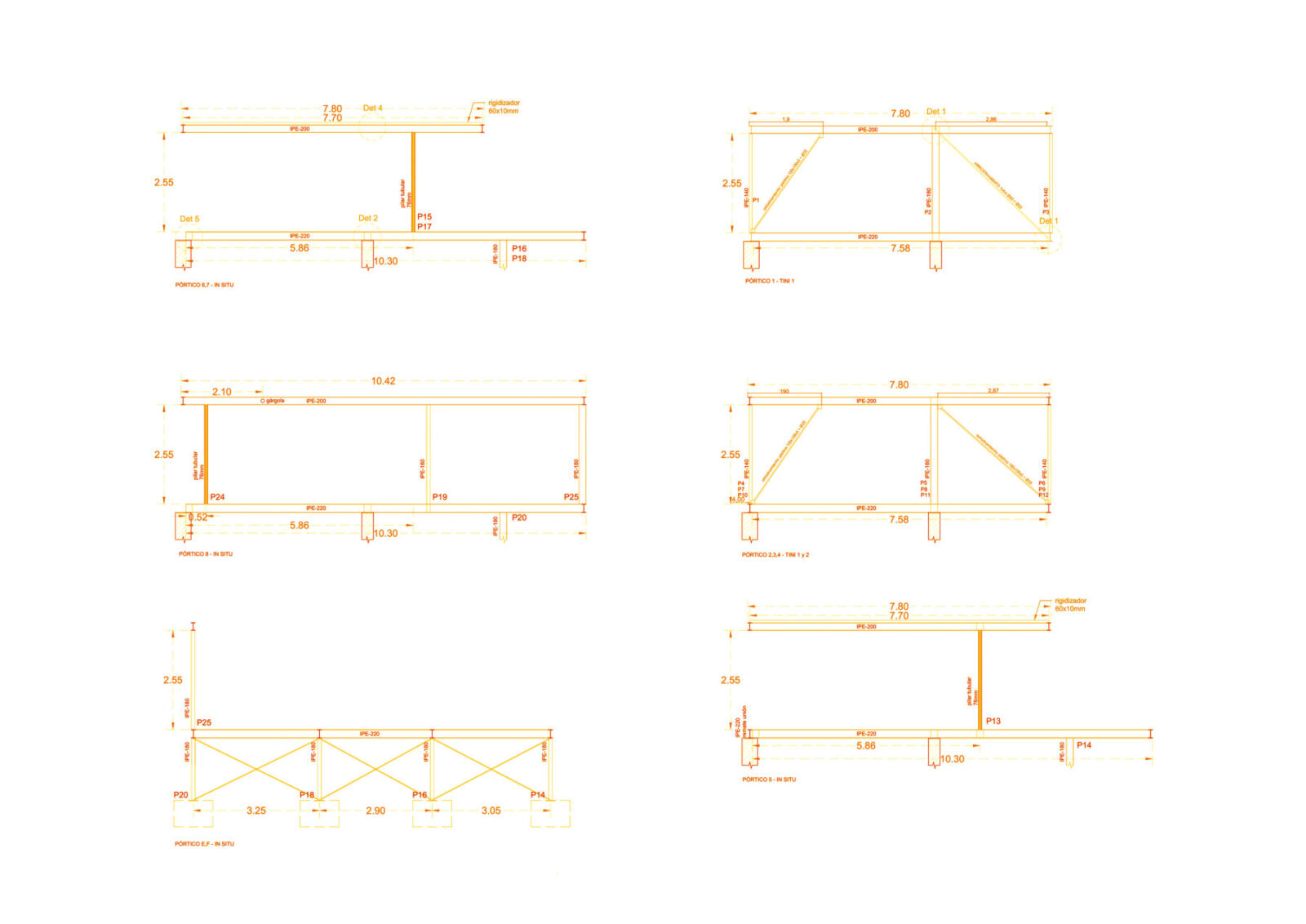
Accompanying the natural slope, pine and gravel sleepers give life to the staircase that winds between the trunks of the pine trees leading you to the door. The studio leans in relation to the house, we like this gesture because it evokes the streets of the towns where at a certain moment the volumes come closer, narrowing them, to then give way to the light that opens them when reaching the square.
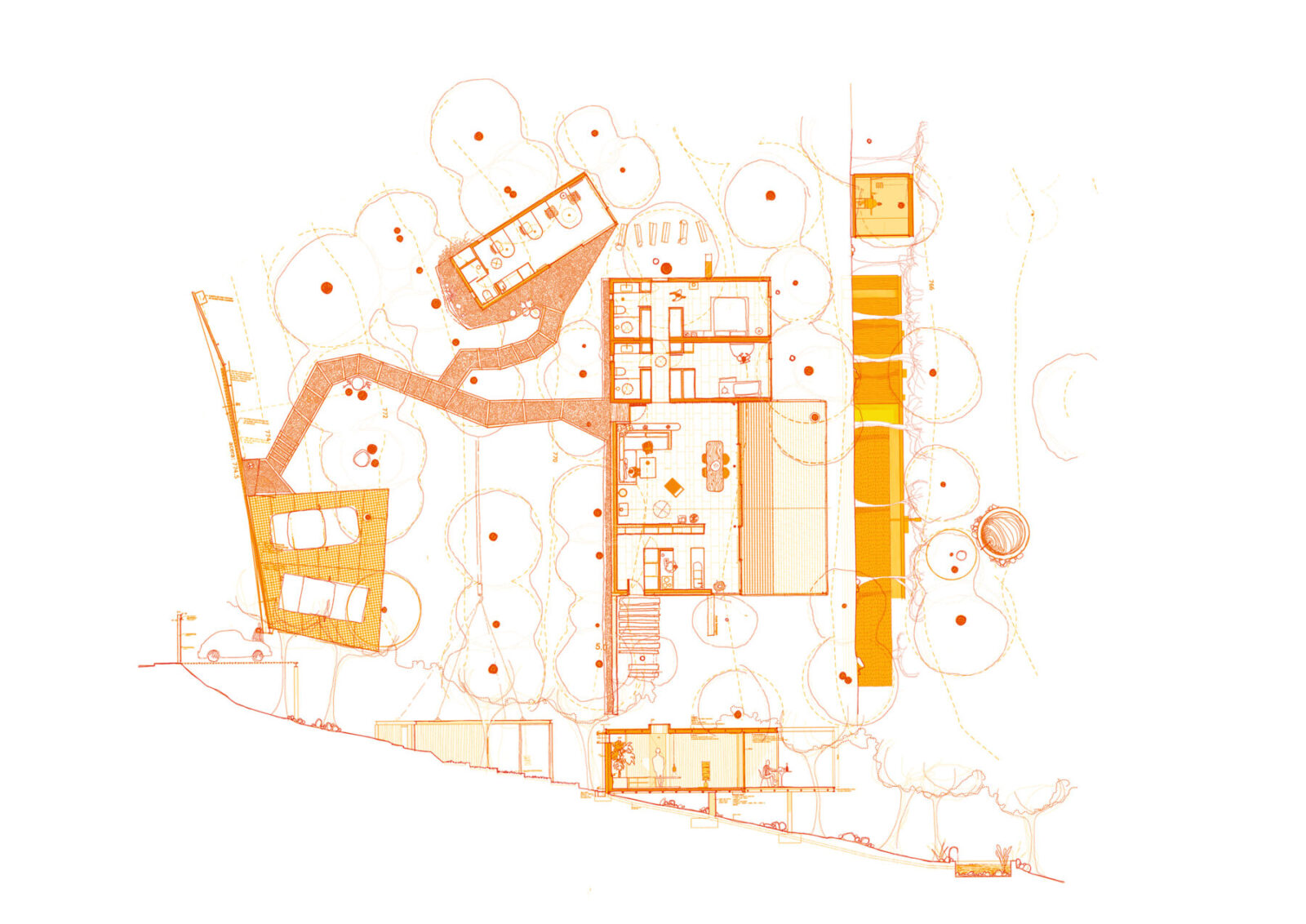
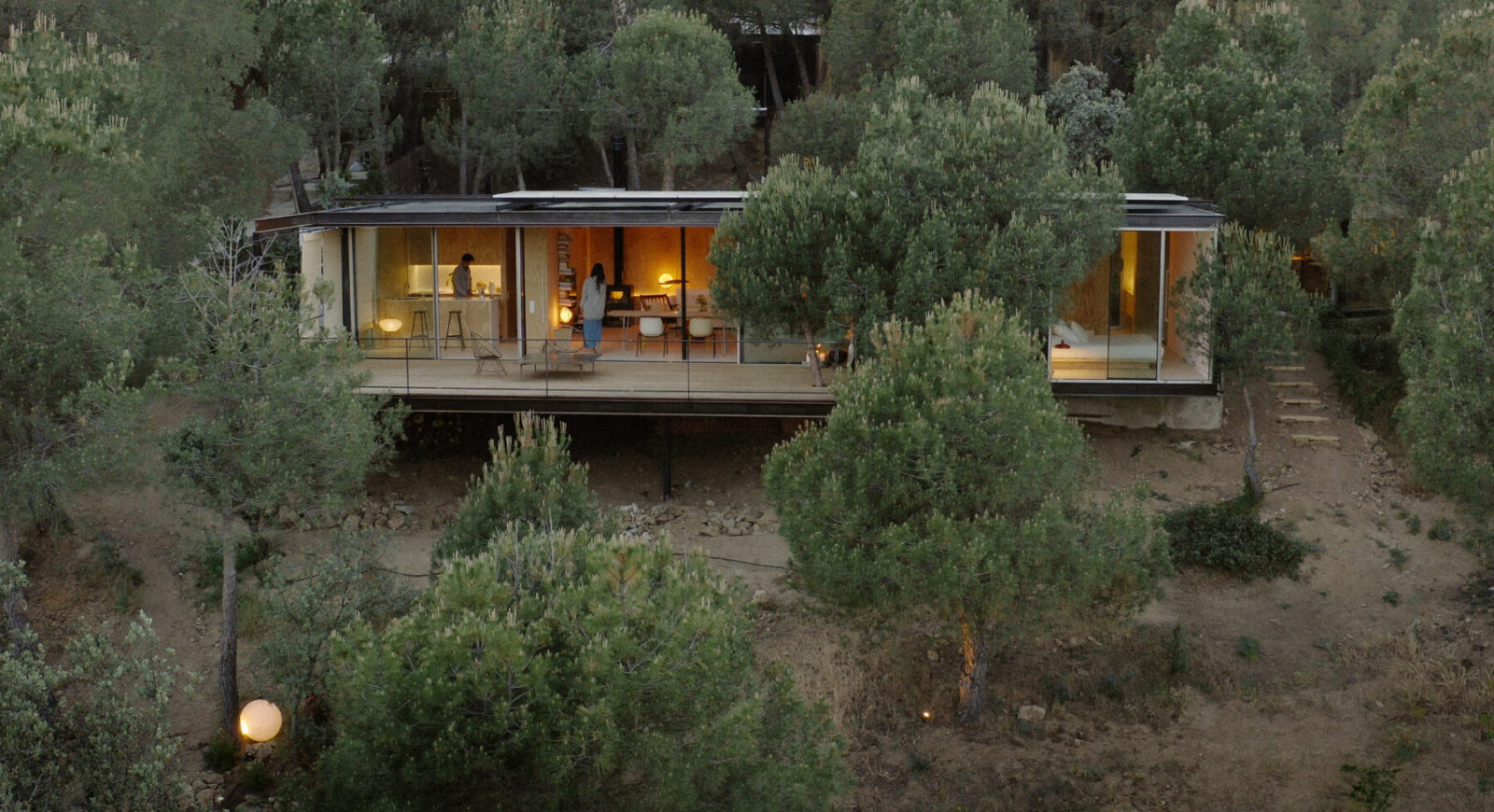
The garden is essentially the existing pine forest completed with various maples and sweetgum that give it the change of color with the seasons and that fresh green that the deciduous leaf has. We have also planted fig, lemon and orange trees and built a pool in the lower part of the garden, where rainwater is collected and water lilies and coves grow. Thanks to a fine copper pipe, we can hear the murmur of the water from the terrace.
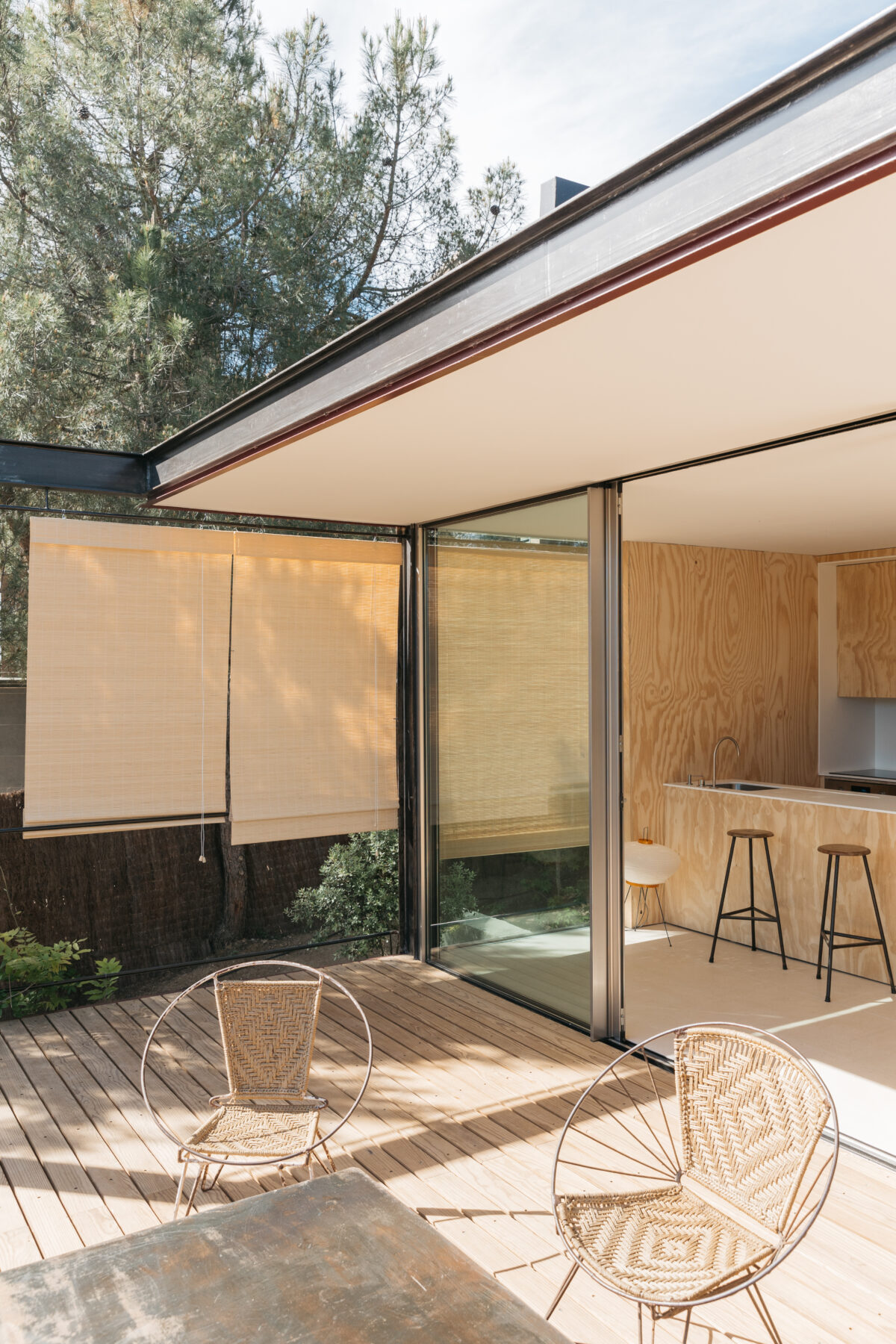
Honestly, each material is shown as it is because we want them to denote the passage of time in the house.

That is why the structure is left raw, like the steel window openings. The wood has nuances that combine with the roughness of the metal, which is why we like to combine them on the façade. In this case, carbonized recovered pine in the studio and heat- treated pine in the house.
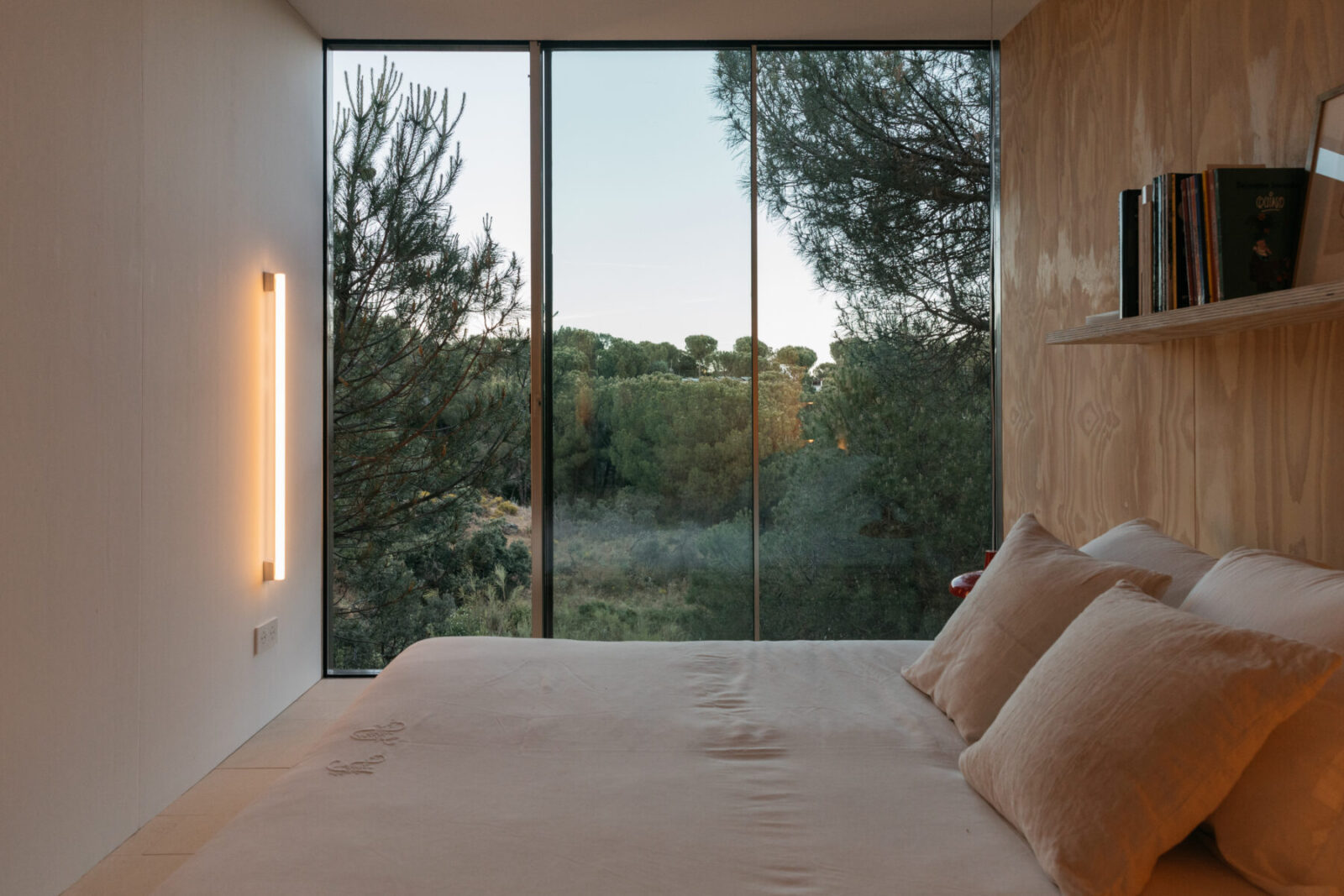


As we believe that houses have to transmit serenity, in the interior we used friendly tones and birch wood in the study and pine plywood in the house, combined with raw limestone floors with irregular quartering. The touches of color are given by the furniture and cushions bought in Morocco. There is a clear influence in the design of this house and generally in our work from the case studies houses, those essential and timeless designs, great ideas executed with little.
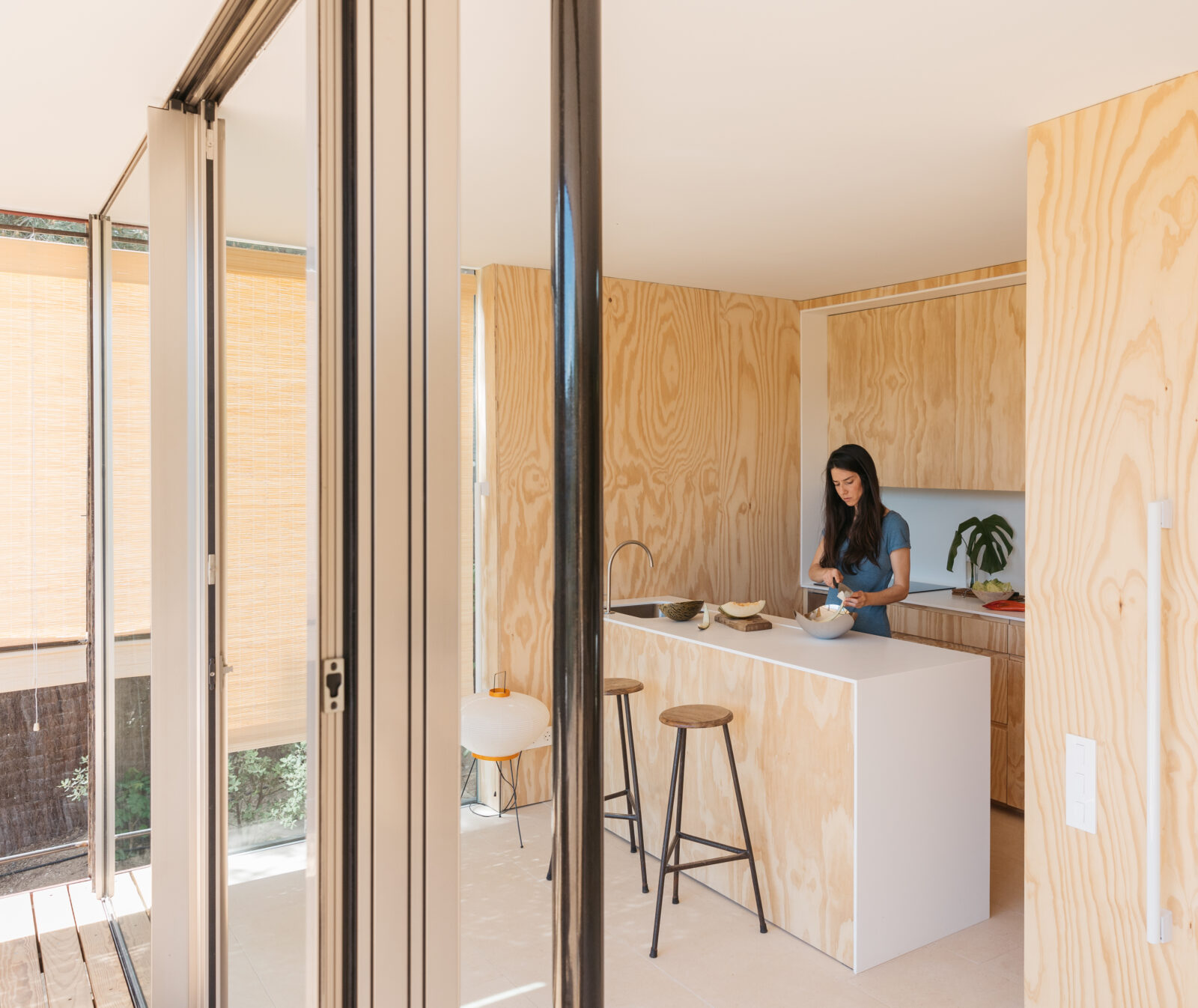
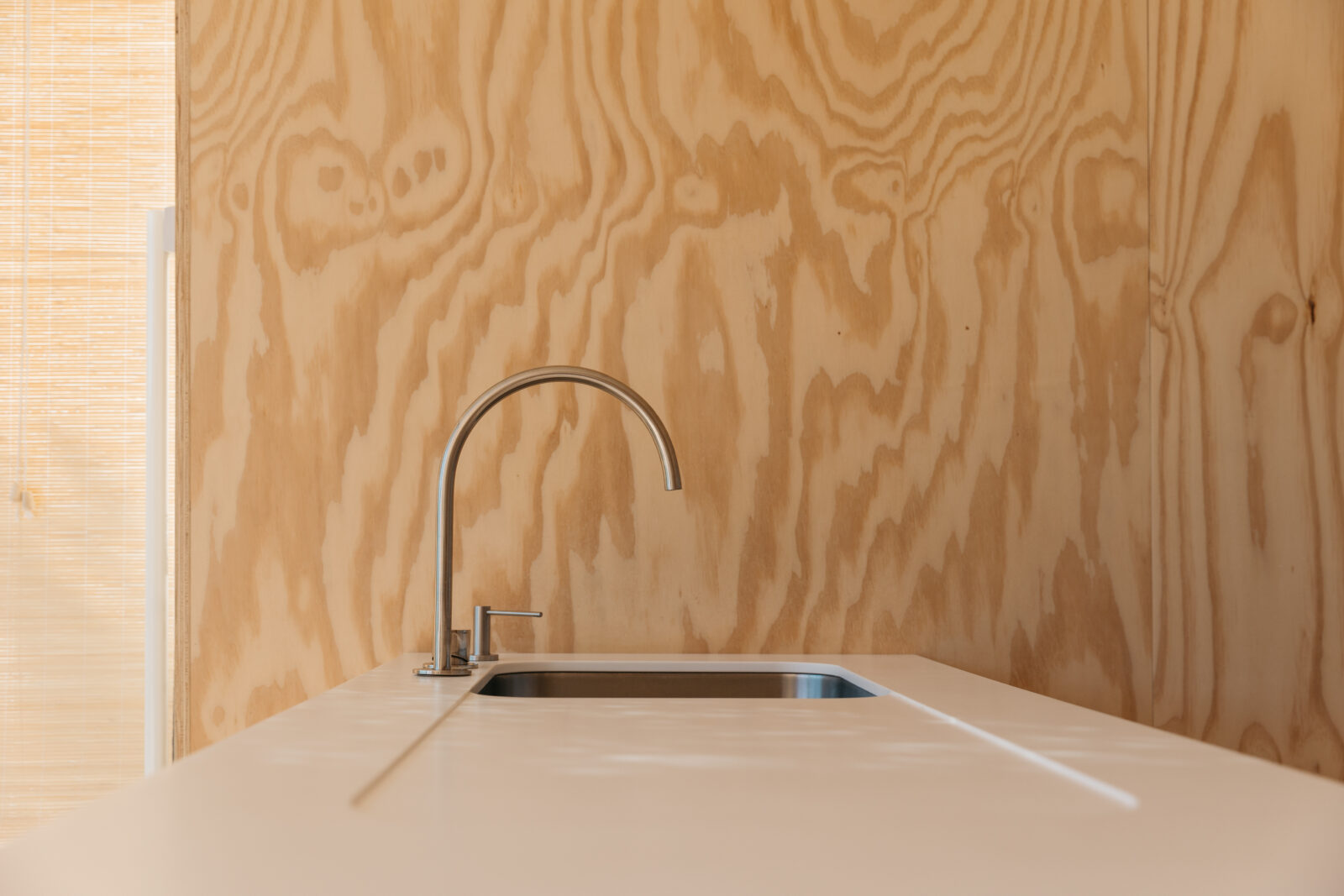
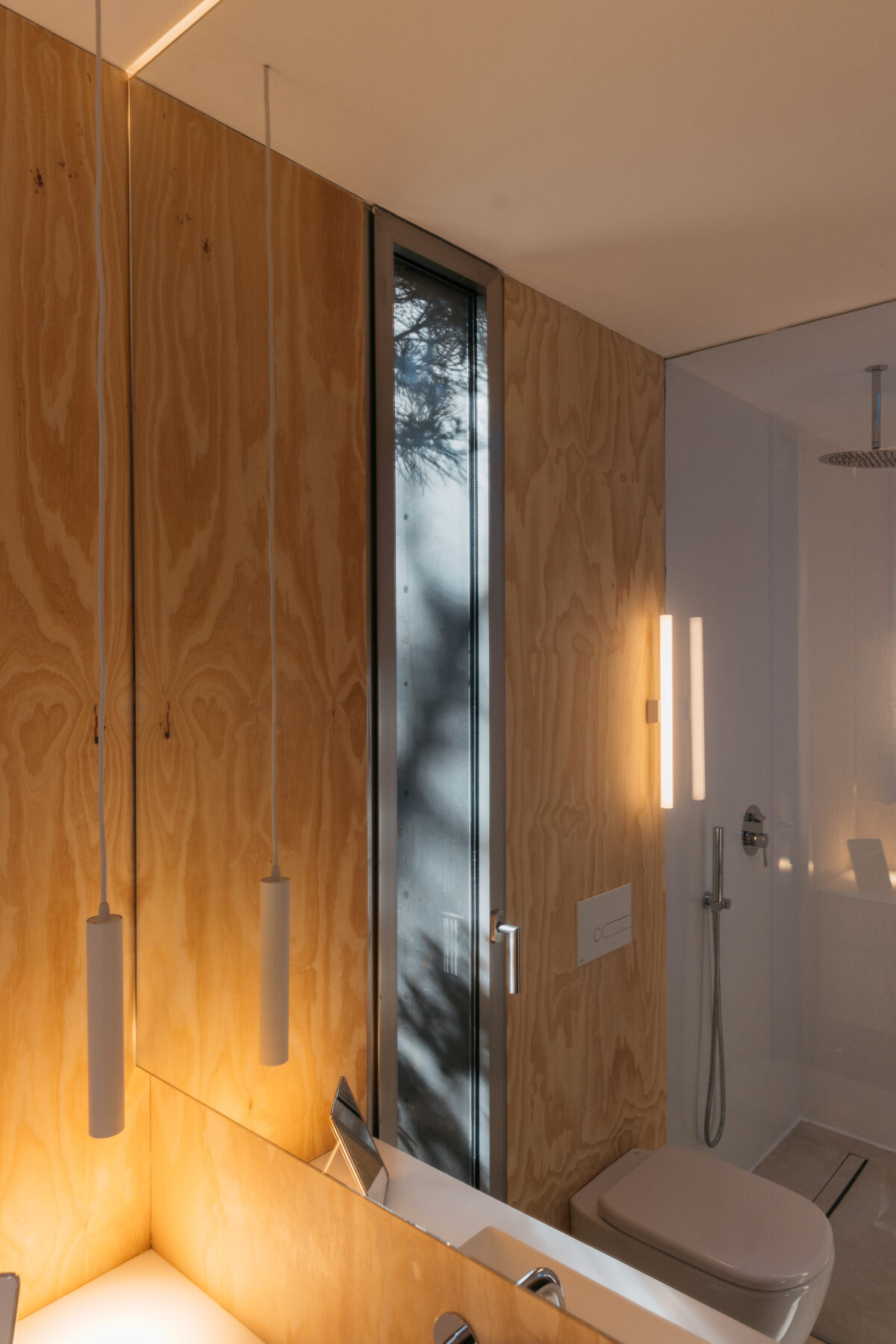
In this way, the essential was sought, architecture to be crucial while being the least important part of the garden, a house that is a porch, a protected space from where to enjoy the landscape.
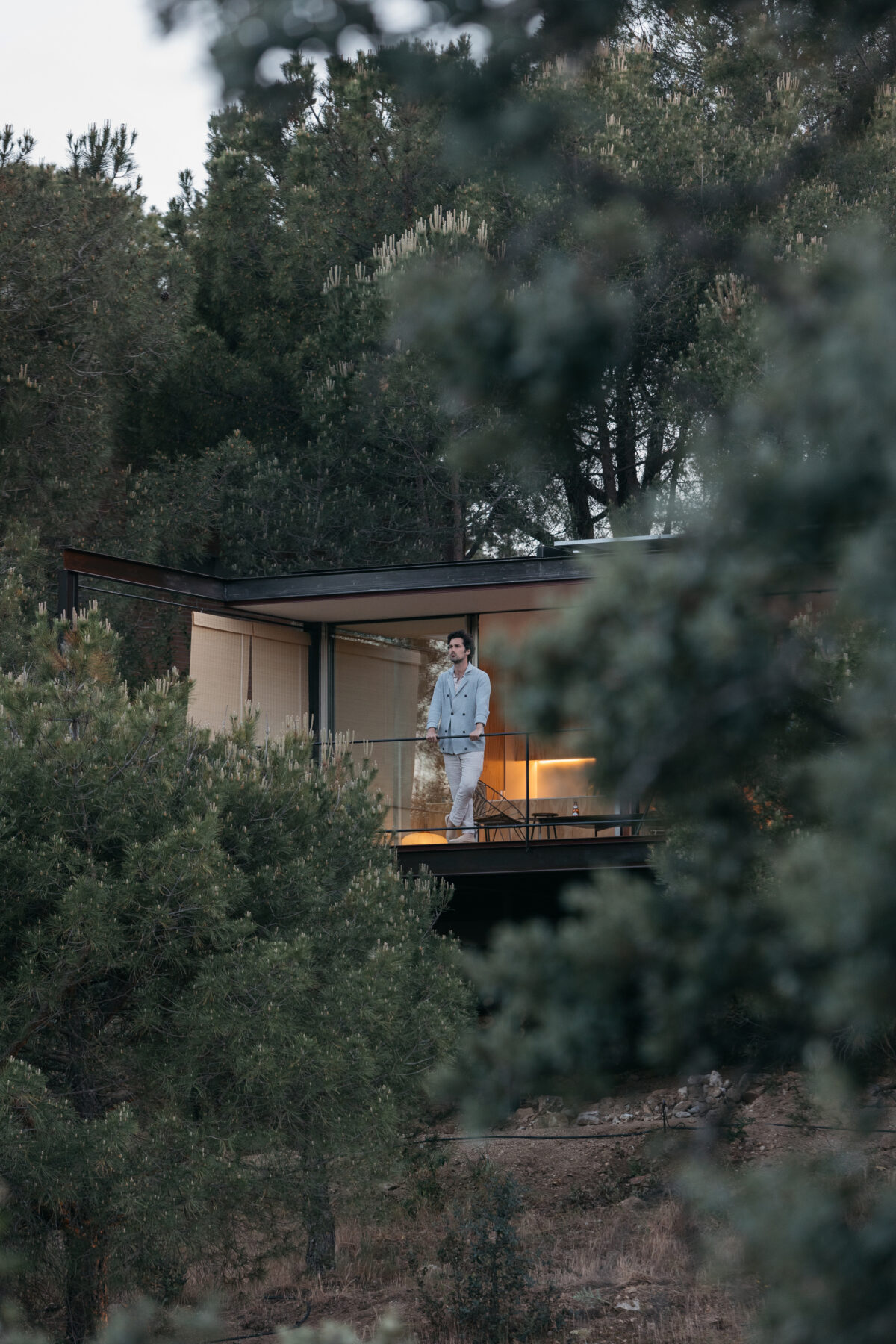
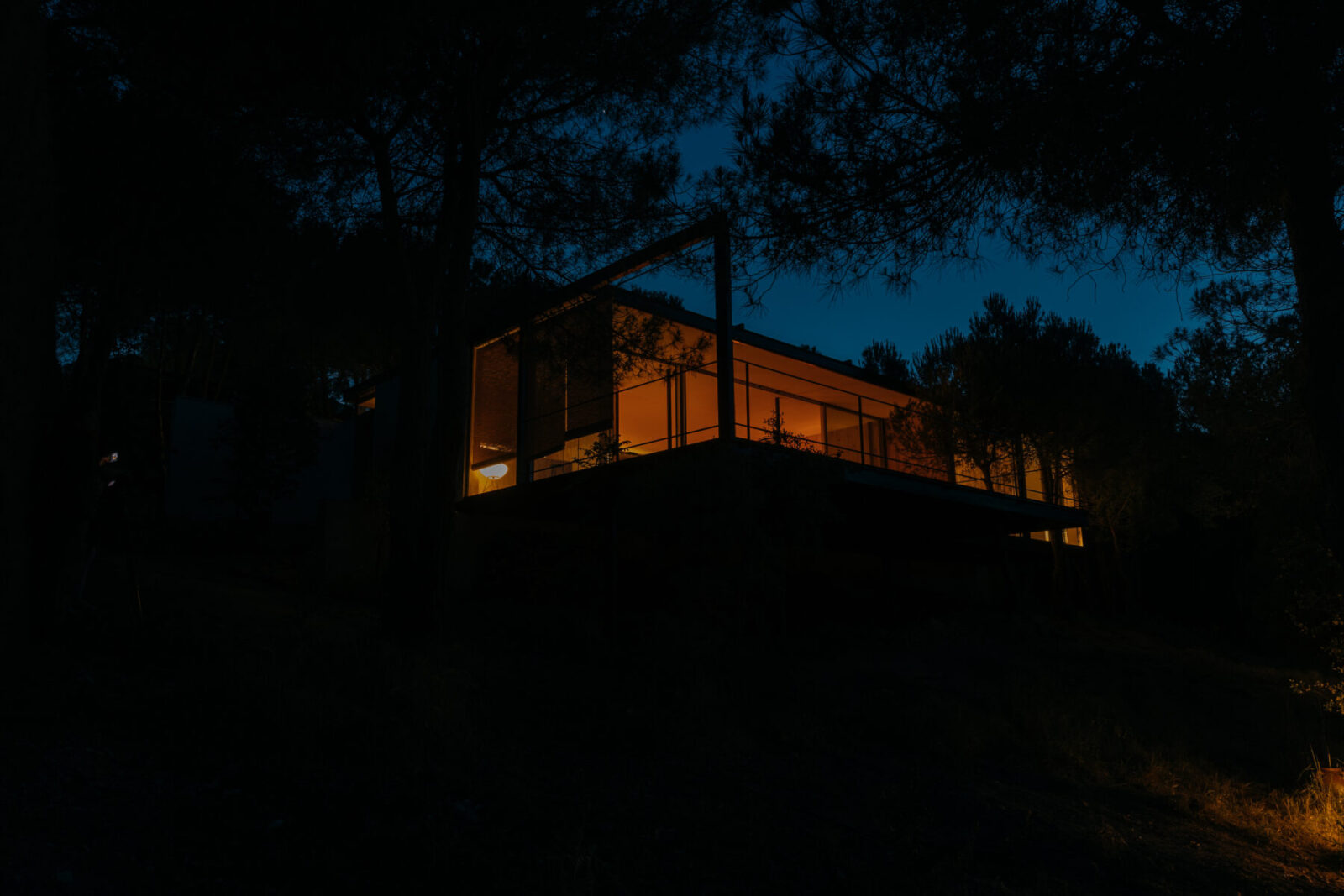
Watch a Fresnos House video here !
Facts & Credits
Project title: Fresnos
Typology: Residential
Location: Madrid, España
Architecture: delaVegaCanolasso / Ignacio de la Vega + Pilar Cano-Lasso
Area: 142 m2
Project Year: 2023
Construction: tini / tiniliving.com
Photography: Paco Marín
Video: Juan Herrero & Arturo Herrero
Text: provided by the architects
READ ALSO: Πρόταση για τον Αρχιτεκτονικό Διαγωνισμό Ιδεών για την ανάπλαση του κοινόχρηστου χώρου και της ευρύτερης περιοχής του Νέου Σταθμού Μετρό Κυψέλη | Δ. Ζούπας, Α. Χελιδώνη, Σ. Παντελιά, Ι. Ευμολπίδης, Γ. Παπασταματίου